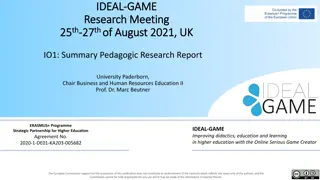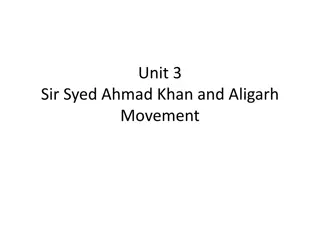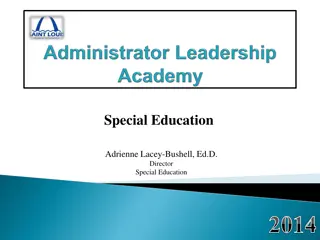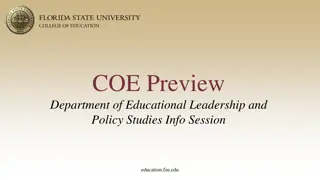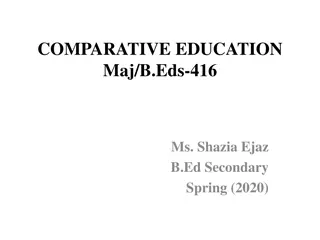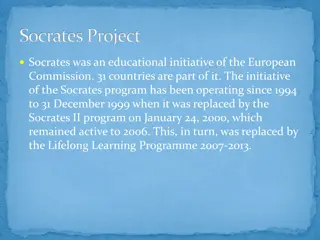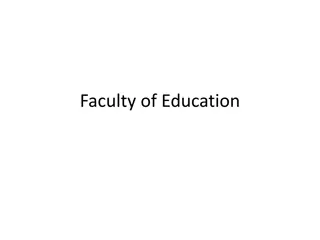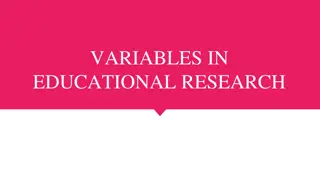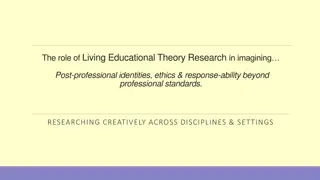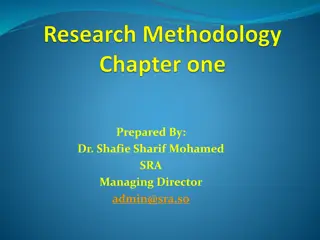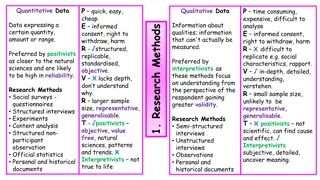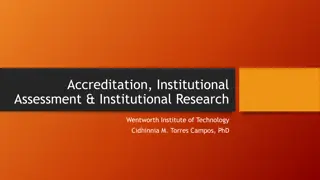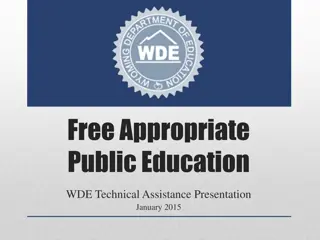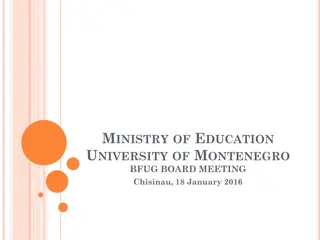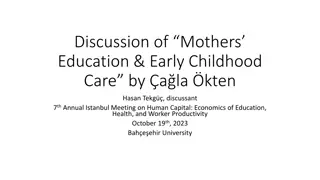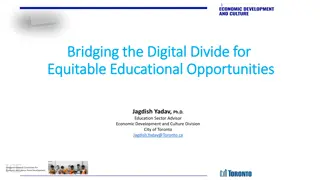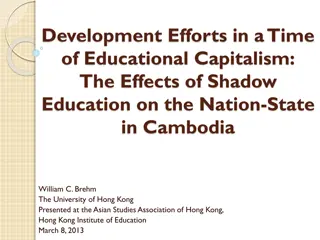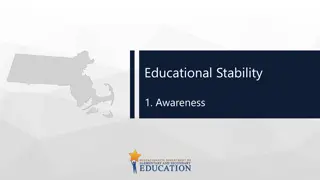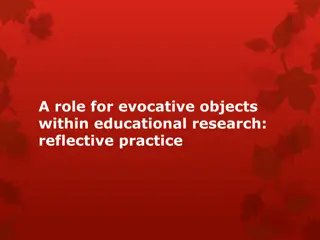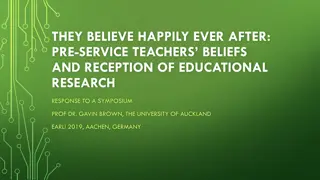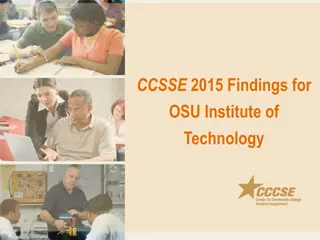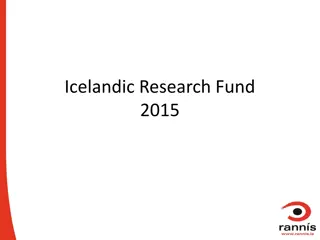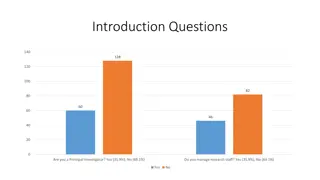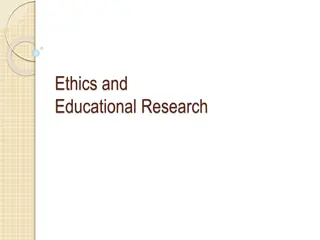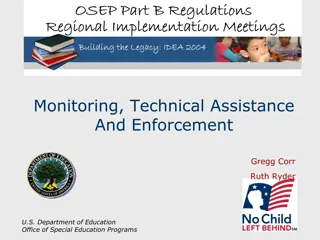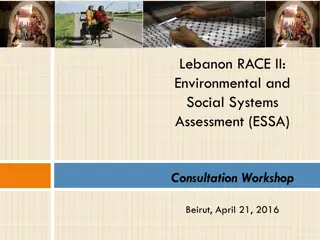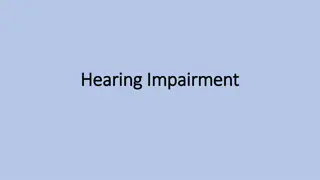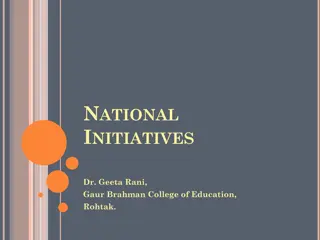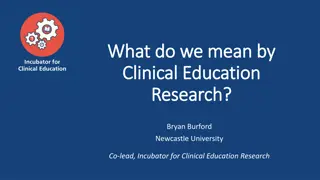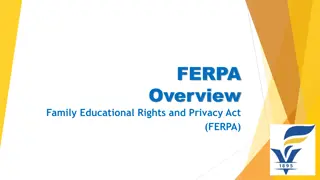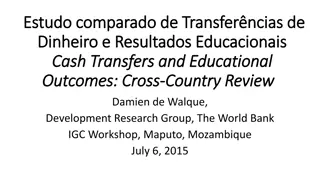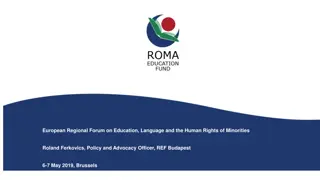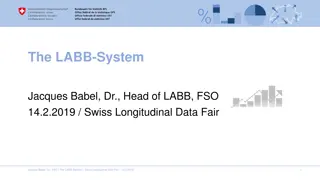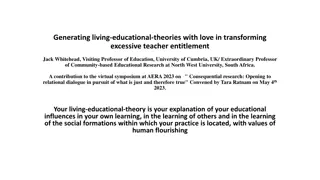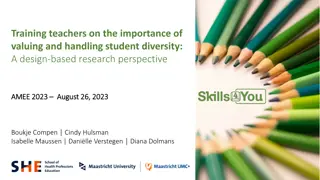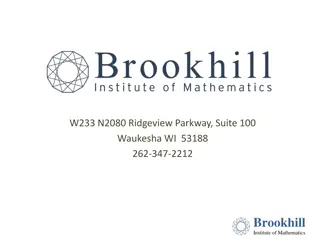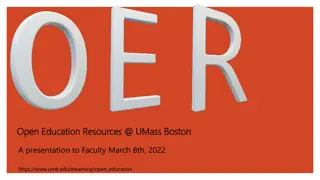Understanding the Role of Educational Research in Improving Education
Educational research plays a crucial role in enhancing educational practices and outcomes. Dylan Wiliam presents two contrasting views on the role of research in education, highlighting the need for a balance between empirical findings and teacher-led action research to drive effective practices. The assumptions of traditional research models are examined, emphasizing the importance of context-specific implementation. Additionally, the complex nature of expertise and practice is explored through examples in various educational contexts, emphasizing the significance of evidence-based strategies for continuous improvement.
- Educational research
- Improvement in education
- Teacher-led action research
- Traditional research models
- Expertise and practice
Download Presentation

Please find below an Image/Link to download the presentation.
The content on the website is provided AS IS for your information and personal use only. It may not be sold, licensed, or shared on other websites without obtaining consent from the author. Download presentation by click this link. If you encounter any issues during the download, it is possible that the publisher has removed the file from their server.
E N D
Presentation Transcript
How is educational research supposed to improve education? Dylan Wiliam, UCL (@dylanwiliam) www.dylanwiliamcenter.com www.dylanwiliam.org
Outline 2 Two extreme views on education Why What works won t work An appropriate role for research in education
Two extreme views on education 3 We just need to get educational researchers to find out what works in education ideally with randomized controlled trials and make sure that teachers do it. Research can t tell teachers what to do. Instead, teachers should be involved in their own action research to find out what works for them, in their own classrooms, with their own students, in their own context.
Assumptions of the traditional model 4 Research findings are independent of who undertakes the research Research findings will have the same meaning to the vast majority of readers Research findings are applicable across a wide range of contexts It produces knowledge without a knower (p. 107) Zinman (1978)
Traditional research into practice model 5 Researchers discover features of effective practice They communicate their findings to practitioners Practitioners incorporate findings into their practice Highly effective for propositional knowledge anti-arrhythmic drugs for myocardial infarction prone vs. supine sleeping positions for infants Less effective where expertise cannot be reduced to words expertise is specific to a context implementing findings is not straightforward
Knowing more than we can say 6 Six video extracts of a person delivering cardiopulmonary resuscitation (CPR): Five of the video extracts feature students. One of the video extracts feature an expert. Videos shown to three groups students, experts, instructors Success rate in identifying the expert: Experts: 90% Students: 50% Instructors: 30% Klein and Klein (1981)
Expertise, practice, and teamwork Data on 203 surgeons performing coronary artery bypass grafts (CABG) on 38,577 patients in 43 Pennsylvania hospitals during 1994 and 1995 Baseline mortality rate: 3.1% Average: 37 CABG procedures per surgeon per quarter (standard deviation 17) For each extra CABG a surgeon performs each quarter, mortality rate drops by 0.015% Surgeon-specific mortality rates High-volume (1 per weekday): 2.5% Occasional (1 per month): 3.3% Huckman and Pisano (2006)
Hospital-specific effects 8 At a specific hospital For each extra CABG a surgeon performs each quarter at that hospital, the mortality rate drops by 0.02% For each extra CABG a surgeon performs each quarter at a different hospital, the mortality rate does not change Huckman and Pisano (2006)
Objective: To determine if using a parachute prevents death or major traumatic injury when jumping from an aircraft. Design: Randomized controlled trial. Setting: Private or commercial aircraft between September 2017 and August 2018 Participants: 92 aircraft passengers aged 18 and over were screened for participation. 23 agreed to be enrolled and were randomized Intervention: Jumping from an aircraft (airplane or helicopter) with a parachute versus an empty backpack (unblinded).
10 Main outcome measures: Composite of death or major traumatic injury (defined by an Injury Severity Score over 15) upon impact with the ground measured immediately after landing. Results: Parachute use did not significantly reduce death or major injury (0% for parachute v 0% for control; p>0.9). This finding was consistent across multiple subgroups. Compared with individuals screened but not enrolled, participants included in the study were on aircraft at significantly lower altitude (mean of 0.6 m for participants v mean of 9146 m for non-participants; p<0.001) and lower velocity (mean of 0 km/h v mean of 800 km/h; p<0.001).
11 Conclusions: Parachute use did not reduce death or major traumatic injury when jumping from aircraft in the first randomized evaluation of this intervention. However, the trial was only able to enroll participants on small stationary aircraft on the ground, suggesting cautious extrapolation to high altitude jumps. When beliefs regarding the effectiveness of an intervention exist in the community, randomized trials might selectively enroll individuals with a lower perceived likelihood of benefit, thus diminishing the applicability of the results to clinical practice.
Its a bit more complicated than that 12 Research can be characterised as a never-ending process of assembling evidence that: particular inferences are warranted on the basis of the available evidence such inferences are more warranted than plausible rival interpretations RCTs prioritize the elimination some plausible rival interpretations, and completely ignore others
An illustrative case: The Tennessee STAR study 13 Kindergarten students randomly assigned to Classes of 22 to 26 with a single teacher Classes of 22 to 26 with a teacher and an aide Classes of 13 to 17 with a single teacher Benefits for students assigned to smaller classes 3 months further ahead by end of 2nd grade 2 x benefits for students from poorer homes, minorities high school graduation rates 11 percentage points higher Molnar et al. (1999); Grissmer (1999); Levin et al. (2007)
Complications 14 Maintaining randomization Migration of high-SES students to smaller classes Generalizing to other settings Unrepresentative participating schools Availability of additional teachers
Implementation issues 15 Resistance from stakeholders Politicians Parents Employers Higher education institutions Teachers (!) Difficulty of implementation Resources Time Changing habits
On the other hand 16 Without guidance from research, teachers might spend time on aspects of practice that have little or no benefit for students modify techniques in ways that reduce or eliminate their effectiveness
The two settings of learning environments Inference involves two settings Information is acquired in one setting (learning) Information is applied in others (predictions, choices) Kind learning environments close match of informational elements in the two settings Wicked learning environments poor match of informational elements in the two settings Hogarth, Lejarraga, and Soyer (2015)
The role of research 18 Evidence-based is a continuum, not a category Research can Indicate areas where improvement efforts are unlikely to improve education Provide information about moderators of effect Provide information about how much improvement is possible or likely Provide information about the costs of the innovation
The knowledge-creating spiral 19 to Tacit knowledge Explicit knowledge Dialogue Tacit knowledge Socialization sympathised knowledge Externalization conceptual knowledge Networking Sharing experience from Internalization operational knowledge Combination systemic knowledge Explicit knowledge Learning by doing Nonaka and Takeuchi (1995)
A model for teacher learning 20 Content, then process Content (what teachers want to change): Evidence Ideas (strategies and techniques) Process (how to go about change): Choice Flexibility Small steps Accountability Support
21 Teachers and researchers working together: A case study
Classroom formative assessment 22 Background Reviews of research on formative assessment Fuchs and Fuchs (1986) Natriello (1987) Crooks (1988) Black and Wiliam (1998a) Dissemination in professional journals Black and Wiliam (1998b) Field experiments in implementation
Design and intervention 23 Our design process cognitive/affective insights synergy/ set of comprehensiveness components Teachers implementation process set of synergy/ cognitive/affective insights components comprehensiveness
The KMOFAP* project 24 24 (then 36, then 48) teachers working on developing their formative assessment practice Regular meetings to discuss progress Polyexperiment design Each teacher chose which techniques to try out which class to work with Each teacher suggested best possible comparison group Effect size calculated for each teacher Jack-knife estimate of overall effect size *King s-Medway-Oxfordshire Formative Assessment Project
The roles of teachers and researchers 25 The role of teachers All teachers should be seeking to improve their practice through a process of disciplined inquiry, focusing on what we already know is effective but are not doing. Some may wish to share their work with others Some may wish to write their work up for publication Some may wish to pursue research degrees Some may even wish to undertake research The role of education researchers Helping teachers, leaders and policymakers identify productive directions for developing practice Working with teachers to make their findings applicable in contexts other than the context of data collection
26 Thank You www.dylanwiliam.net


